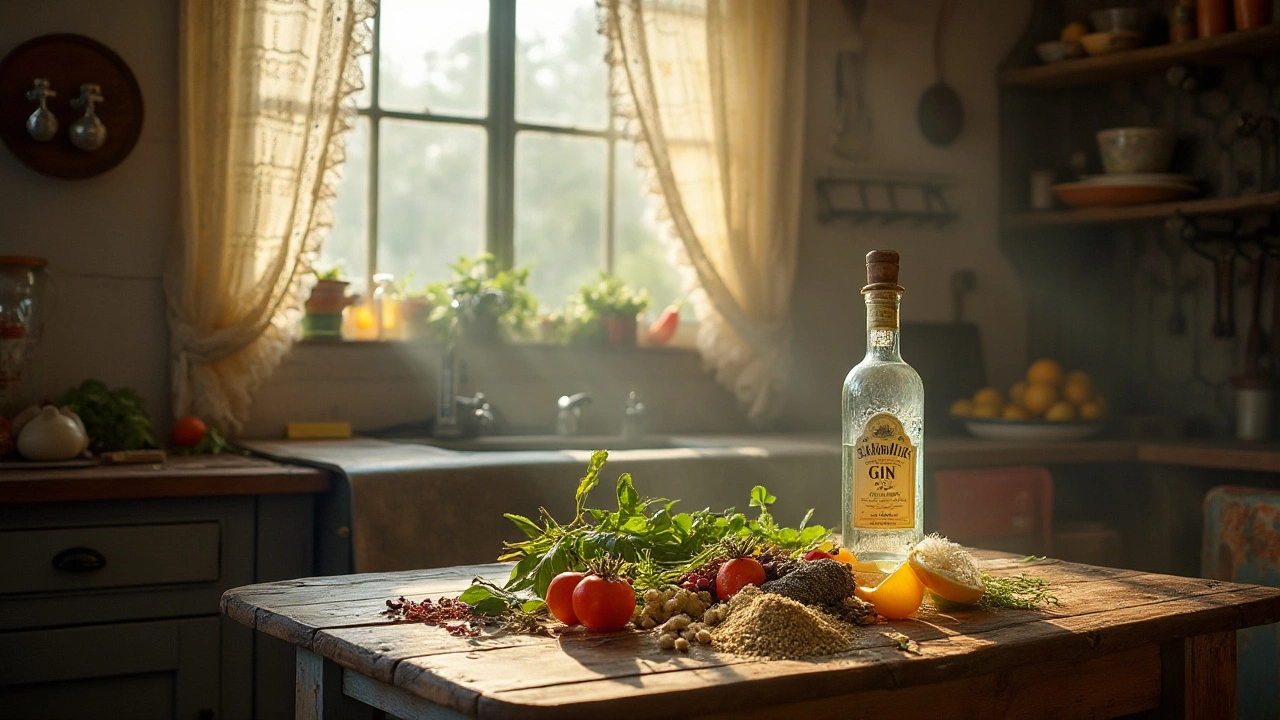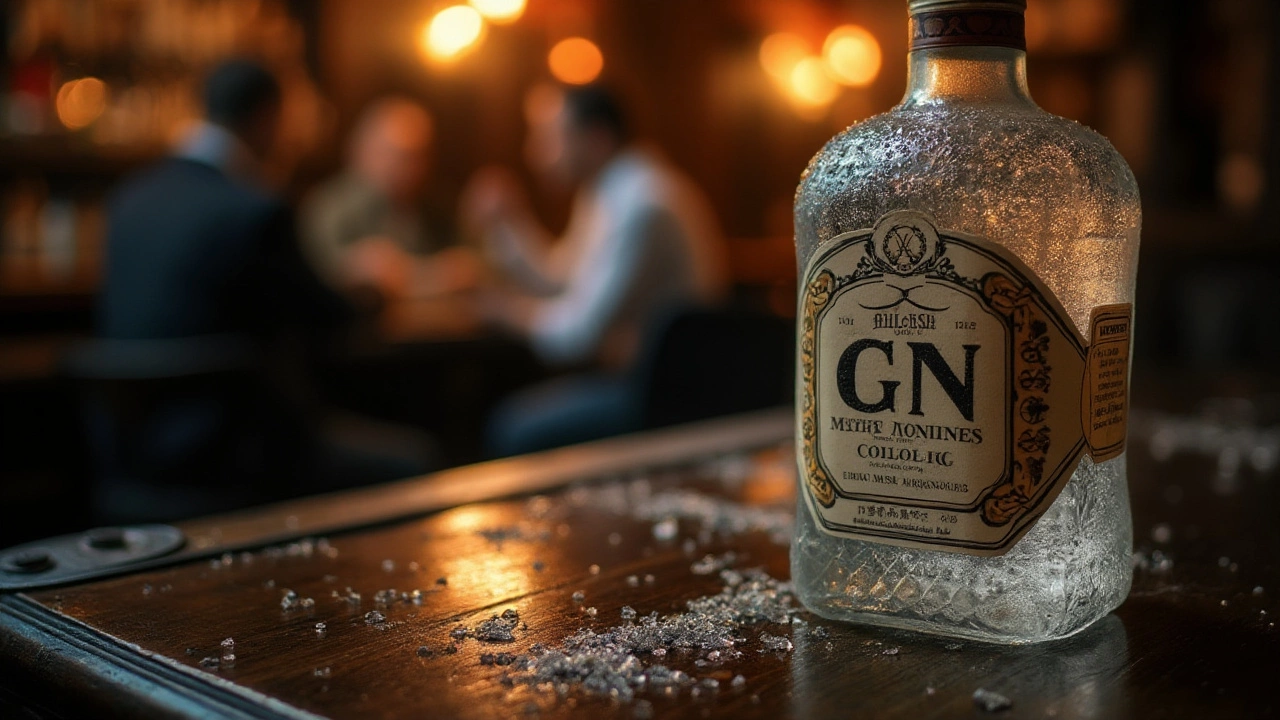Gin has an enduring legacy, with its roots deeply embedded in spirit traditions around the world. Whether you prefer it neat, mixed into a classic cocktail, or straight from the freezer, the question of how best to store and serve gin is one that piques the curiosity of many enthusiasts.
The conversation often steers towards whether chilling gin enhances or diminishes its myriad of flavors and aromas. As temperatures drop, the perception of taste can shift, sometimes revealing layers while at other times obscuring them. In the world of gin, where botanical blends are unique and carefully crafted, such nuances become essential to consider.
As you dive into this spirited exploration, uncover how temperature variations affect gin and gather expert tips on how best to enjoy this timeless drink during your next distillery tour or tasting session.
- The Chemistry of Gin: Why Temperature Matters
- How Chilling Affects Gin’s Flavor and Aroma
- Expert Opinions: To Chill or Not to Chill
- Storing and Serving Gin: Tips for Enthusiasts
- A Guide to Gin Distillery Tours: What to Expect
The Chemistry of Gin: Why Temperature Matters
Understanding the chemistry behind gin can greatly influence how we choose to store it. At its core, gin is a complex spirit that is flavored primarily by juniper berries but often features a symphony of botanicals like coriander, citrus peels, angelica, and more. These botanicals contribute distinct aromas and flavors, which can be affected by changes in temperature. When gin is chilled, the cold can mute some of these volatile compounds, leading to a more subdued taste experience on the palate. This is similar to the way a chilled red wine has less apparent aromas compared to one at room temperature. Yet, chilling could also emphasize certain refreshing elements like the piney zing of juniper or the crispness of citrus, making it a preferred choice for those who enjoy a brisk sip.
The volatility of alcohol itself is another factor to consider. Alcohol evaporates rapidly at warmer temperatures, which means that storing gin at room temperature might cause your nose to encounter an alcohol-dominated aroma before the subtler, more delicate scents of botanicals. This is especially true at higher proof levels where the evaporation rate increases. According to a study published in the Journal of Agricultural and Food Chemistry, temperature adjustments play a critical role in the perception of aroma in spirits, indicating that gin stored cold might mask some scents while enhancing others.
"Temperature not only affects the flavor profile of a spirit but also the aroma compounds that reach the nose first," suggests Dr. Maggie Smith, a food chemist with a special interest in spirits. "For a spirit like gin, which relies heavily on its aromatic bouquet, this can be quite significant."While there are pros and cons to storing gin chilled, personal preference can't be overstated. Some prefer the crispness offered by a chilled gin, while others appreciate the full aroma profile that comes at slightly warmer temperatures. Exploring both options can be part of the joy gin brings, especially when visiting distilleries that might offer varied experiences.
How Chilling Affects Gin’s Flavor and Aroma
When discussing the intricacies of gin chilling, it’s essential to consider how temperature can act as both a friend and foe to this beloved spirit. At first glance, one might think that chilling gin is simply a way to ensure a refreshing, crisp sip. However, behind this seemingly straightforward choice lies a world of chemistry. Cold temperatures have the power to mute the release of aromas. In this spirit, where botanicals and herbaceous notes create an orchestra of flavors, chilling might dull these harmonies just when they are poised to sing. But like any good debate, the answer isn’t purely one-sided.
Chilling gin can also lead to the enhancement of certain characteristics. It tempers the spirit’s alcohol edge, allowing more delicate flavors to come forward. For example, gins with pronounced juniper notes might reveal subtler undertones of citrus or spice when chilled. The temperature dance can be delicate: finding a spot where some flavors are highlighted while others maintain their graceful presence. Emma Stokes, author and gin enthusiast, once noted, “It’s all about balance – sometimes bringing gin down a few degrees brings out a crispness that’s utterly refreshing.”
Those who prefer traditional ways might argue against chilling, citing the importance of experiencing the full flavor profile as intended by the distiller. Distillers often craft their recipes painstakingly, balancing botanicals to achieve a warm aroma upon pouring. In colder climates or seasons, gin enthusiasts might inadvertently choose to chill their bottles, subduing the experience. But times are changing, and people are increasingly enjoying gin in modern cocktails, where chilling often finds a place to shine.
The science doesn’t lie: temperature impacts volatility, which in turn affects aromatics. In an experiment of chilled versus room temperature gin, a study found that gin served at warmer temperatures released over 100% more aroma compounds than its chilled counterpart. Using such data helps guide our choices, encouraging a balance between what science suggests and personal preference. Here’s the interesting part: some gins, often those with more extensive botanical blends, can become new spirits with each degree change. Gins that emphasize floral elements may present as subdued at colder temperatures, juxtaposing against the classic dry gins, where a chill can sometimes accentuate the spirit’s signature crispness.
When visiting a distillery or engaging in a gin distillery tour, consider asking about their recommended serving suggestions. Often, distillers have conducted personal tests to align their offerings with an optimal experience. Whether you decide to serve your gin at room temperature or straight from the freezer, remember that the choice should enhance your pleasure rather than adhere strictly to any rulebook. The timeless debate whether to chill or not amplifies the joy of discovery in every sip.

Expert Opinions: To Chill or Not to Chill
When it comes to enjoying gin, aficionados are often split on whether gin chilling enhances the drinking experience. The debate is nothing new; experts, bartenders, and gin enthusiasts have long discussed the nuances of serving gin chilled versus at room temperature. Some argue that chilling gin can mask certain flavors, particularly in gins that feature complex botanicals. The perception is that cold temperatures might dull the senses, hiding the intricacies of taste and aroma that one might savor when the gin is warmer.
On the flavor front, chilling can have a significant impact. Cold temperatures can indeed change the way certain notes in gin present themselves. For bright and citrusy gins, colder temperatures may tighten the flavor, making it crisper. However, earthy, spiced gins might lose some of their subtle characteristics in the chill. These differences can be crucial, especially for those who appreciate the craftsmanship that goes into crafting these spirits. Several master distillers have shared that the best sip of gin is one that honors the botanicals without a chilling barrier. Yet, some still argue there's nothing like a cold gin cocktail on a hot day, served right from the freezer.
"A chilled gin is ideal for those who prefer their drink neat, without the interference of ice cubes diluting the original taste. But for gin purists, room temperature continues to unlock a full bouquet of flavors often lost with chilling," says renowned gin critic Tom Sanderson.
The environment and occasion also play significant roles in determining the best serving temperature. During distillery tours, many guides suggest tasting gin in varied states, from chilled to room temperature, to experience the full spectrum of its potential. While tasting, enthusiasts can notice how chilling highlights or suppresses particular ingredients, adding layers to their appreciation. For those on the fence, experimenting with gin served both ways might be the key, allowing you to tailor each experience to your preference.
For practical advice, it's often suggested to start with a standard chill and then gradually allow the gin to reach room temperature as you enjoy your glass. This approach offers a middle ground, letting you experience changes across the temperature spectrum. Finally, always trust your own palate. With so many expert opinions available, the ultimate choice still rests on your personal preference. Whether you choose to chill or not, enjoying gin your own way is what makes the experience truly unique.
Storing and Serving Gin: Tips for Enthusiasts
When it comes to savoring the delightful notes of your favorite gin, storage and serving methods play a crucial role. A well-kept bottle of gin not only speaks of an enthusiast’s dedication but also prolongs the freshness and intensity of its botanicals. The question many gin enthusiasts grapple with is whether to refrigerate—and while opinions may diverge, a few universal practices ensure that your gin chilling or resting stays optimal.
First off, keep your gin in a cool, dry place away from direct sunlight. This prevents any breakdown of essential oils and botanicals, which can affect taste over time. Storing gin in a pantry or a cupboard is often recommended. It's all about maintaining a constant temperature, so make sure your chosen spot doesn’t fluctuate too much. For those living in hot climates, a cool basement can serve as a perfect gin hideaway. Aim for around 13-18°C (55-65°F) to keep the spirit in the best shape.
A small but contentious detail is whether or not to chill gin before serving. Chilling can inhibit some of the more volatile aromas, making it great for stronger, herbal gins. Yet, if you've got a delicate floral gin, it might be better at room temperature to enjoy the full bouquet. Always remember that freezing gin increases its thickness, adding a velvety texture that some might find appealing in heavier, more botanical-heavy gins. Try a taster 'freezer shot' to see if you prefer the chilled sensations it brings.
When you’re ready to serve, the choice of glassware can subtly change your drinking experience. Traditional gin glasses, with their wide bowls, allow you to enjoy the scents fully, crucial for a drink steeped in such aromatic history. A tumbler, meanwhile, might be more suited to gin and mixers, providing enough room for a generous serving and plenty of ice to keep it cool. There's no hard and fast rule here, and part of the gin's appeal is its adaptability to personal preferences.
"Gin is the ultimate canvas for your expression," notes master distiller Lesley Gracie. "It welcomes individuality, whether you're sipping it neat or crafting a bold cocktail."
Don't forget about the garnishes, as they add another dimension to your gin. A strip of citrus peel can enhance the fresh notes, while a cucumber slice is perfect for a refreshing summer pour. Experimenting with berries, herbs, or even edible flowers can stimulate your senses in unexpected ways, turning each sip into a distinct experience rich with discovery.
To wrap it up, people often style gin with friends, trying new glasses, garnishes, or mixers. Explore the intricate dance of flavors on a lazy afternoon, adding a dash of something extraordinary to your ordinary. Whether you decide to chill gin or appreciate it warm, let it be an expression of your taste. There are endless possibilities, all ready to be explored at your next cozy gathering or sophisticated dinner party.

A Guide to Gin Distillery Tours: What to Expect
Stepping into a gin distillery is like embarking on a journey through the fascinating world of botanicals and craft distillation. From the moment you arrive, there's a palpable sense of history and innovation in the air. Many distilleries offer a warm welcome with a brief overview of their heritage, often tracing roots back to early days of gin production. This is where you might learn that gin, which originated as a medicinal spirit in the Middle Ages, truly came into its own during the 17th century, famously branded as 'Mother's Ruin' due to its popularity in London.
The tour itself typically begins with a walk through the production area, where you'll witness the intricate process that turns humble ingredients into an indulgent experience. Details about the mash tun, the copper stills, and fermentation tanks are provided, revealing how each part contributes to the gin's unique character. Enthusiasts often express surprise at the delicate art of balancing botanicals. Some distilleries use as few as three or four, while others employ over thirty to create distinct flavors. As you walk through, the air is often tantalizingly infused with vibrant aromas of juniper, citrus, and rose, intriguing your senses at every turn.
A pivotal stop on any gin distillery tour is the tasting room. This is the moment every visitor anticipates. Here, you're treated to a curated tasting session, often guided by a master distiller who helps explore the subtleties of flavor profiles. Expect to sample a range, from crisp and classic gins to innovative interpretations that might include unexpected botanicals. While sipping, it's common to be encouraged to try the gin at different stages—neat, over ice, or in a simple cocktail—to truly appreciate its versatility. As Jane Giles, a renowned distillation expert, once noted,
"Tasting a gin is like unveiling a story; each sip carries the artistry of its maker."
Some tours also delve into the world of gin pairings, where you can explore complementary foods that accentuate the spirit's botanical notes. Imagine a platter with items like smoked salmon or a selection of cheeses paired perfectly with a particular gin. Tours may also include workshops where participants get a chance to try their hands at concocting their own blends. It offers a playful yet enlightening experience, allowing you to grasp just how delicate and precise gin production can be.
It's not unusual for the tour to end at the distillery shop, a delightful spot where you can purchase your newly discovered favorites. Many distilleries offer exclusive editions not available elsewhere, making it a unique opportunity to acquire something special. Visitors often leave not just with bottles, but with deeper knowledge and appreciation for the art of gin making. Whether you're a gin aficionado or a curious newbie, a distillery tour provides a refreshing perspective on one of the world's most beloved spirits.


